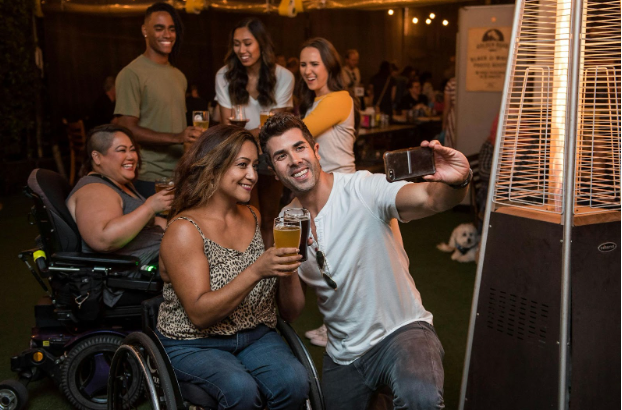Eating disorders can affect anyone, but people in marginalized communities often face extra barriers to diagnosis, treatment, and recovery. Cultural stigma, financial limitations, and lack of representation in research and care systems can make it harder to access the support needed to heal.
At Kindful Body, we believe recovery should be inclusive, accessible, and affirming for all. This article explores the unique challenges individuals from marginalized groups face and how culturally responsive care, financial accessibility, and community support can help bridge the gap.
Understanding the Unique Challenges Marginalized Communities Face
While eating disorders are often stereotyped as affecting only white, thin, affluent individuals, research continues to show they impact people across all races, genders, body sizes, and socioeconomic backgrounds. Still, stigma, systemic inequities, and a lack of representation make recovery more difficult for many.
Cultural Stigma and Misconceptions
In some communities, mental health concerns are still seen as private, taboo, or a sign of weakness. Cultural messages may discourage open conversations about body image, food, or emotional struggles, making it harder to recognize disordered eating and seek help.
Others may assume that eating disorders only affect certain groups, further silencing those who don’t fit the stereotype. This can lead to delayed diagnosis, feelings of shame, or reluctance to ask for support.
A culturally sensitive approach to care helps individuals feel seen, respected, and safe, especially when discussing deeply personal struggles around food, identity, and body image.
Economic Barriers to Care
Eating disorder treatment is often expensive. Many therapy services, nutrition support, and higher levels of care are out of reach for individuals without insurance or those with limited coverage for mental health.
Food insecurity and financial stress can also shape eating patterns, yet these behaviors are rarely recognized as part of disordered eating when viewed through a narrow clinical lens.
Improving access to care means:
- Increasing availability of sliding-scale and low-cost treatment
- Expanding insurance coverage for eating disorder support
- Recognizing how financial hardship intersects with food-related distress
Underrepresentation in Research and Treatment
Most eating disorder research has centered on white, cisgender, able-bodied women, leaving out the experiences of BIPOC, LGBTQ+, disabled, and larger-bodied individuals.
This lack of representation leads to:
- Misdiagnosis or missed diagnosis
- Biased screening tools
- Treatment approaches that don’t reflect lived experiences
Broadening research participation and clinical training is essential for creating care that reflects the diversity of those affected.
The Importance of Intersectionality in Eating Disorder Treatment
Eating disorders don’t exist in a vacuum. They are influenced by the complex intersections of race, ethnicity, gender identity, sexual orientation, disability, as well as other factors. Understanding these experiences is critical to creating affirming care.
Racial and Ethnic Identities
Western beauty standards often marginalize people of color by excluding their natural body shapes, hair textures, and cultural food traditions. This can fuel body dissatisfaction and feelings of not belonging.
In healthcare settings, BIPOC individuals are more likely to have their symptoms dismissed or minimized. They may be told they “don’t look like someone with an eating disorder” or have their concerns overshadowed by weight stigma.
Culturally aware providers can validate these experiences, offer relevant support, and honor the healing practices within different communities.

LGBTQ+ Experiences
Many LGBTQ+ individuals experience body image challenges due to gender dysphoria, societal expectations, or pressures to conform. Eating disorders may emerge as a way to navigate identity, regulate emotion, or seek control in environments that feel unsafe.
Unfortunately, treatment spaces are not always inclusive.
Affirming care includes:
- Providers trained in LGBTQ+ identities and trauma
- Support groups centering queer and trans experiences
- Language and environments that respect gender expression and autonomy
Disability and Accessibility
Disabled individuals may face unique challenges such as:
- Eating difficulties related to mobility, sensory sensitivity, or medical needs
- Increased body image pressures due to ableist messages equating thinness with health
- Fewer accessible treatment options (physically or financially)
Eating disorder care must account for physical, sensory, and communication needs, so that all bodies can access healing.

Creating Inclusive and Accessible Recovery Pathways
Healing is not one-size-fits-all. Addressing the needs of marginalized communities means building treatment systems that are responsive, respectful, and rooted in equity.
Expanding Access to Culturally Competent Care
Providers must receive training in:
- How eating disorders present across different communities
- The impact of racism, weight stigma, ableism, and transphobia on body image
- Cultural values around food, family, and health
Care should be collaborative, not prescriptive—honoring the lived wisdom of each individual.
Bilingual and multilingual services are also essential to remove language barriers and support emotional expression in a person’s preferred language.
Addressing Financial Barriers
Financial stress should never be a reason someone can’t access care. Strategies to support accessibility include:
- Offering sliding-scale therapy
- Connecting individuals to community mental health centers
- Advocating for policy changes that expand insurance coverage for eating disorder treatment
Recovery should not be a privilege. Everyone deserves access to support, regardless of income or insurance status.
Building Community Support and Representation
Community-based healing can be a powerful alternative or addition to clinical care. This includes:
- Peer support groups for shared identity or lived experience
- Education and advocacy that challenge harmful stereotypes and increase awareness
- Representation in media and recovery spaces that reflect diverse stories and bodies
When individuals see themselves reflected in treatment, recovery becomes more accessible and affirming.
The Role of Support Systems in Healing
Support from trusted people—whether family, friends, or chosen community—can offer emotional safety and connection throughout the recovery journey.
Family Involvement
Family can either support or unintentionally complicate recovery. Educating families about eating disorders and cultural influences can help shift harmful dynamics and build healthier communication.
Family-based therapy is especially effective for adolescents—but it can also benefit adults by creating a more validating and supportive home environment.
Peer Support and Online Communities
Peer support allows individuals to feel less alone. Connecting with others who understand the complexities of eating disorders in marginalized communities can foster hope and reduce shame.
Whether through identity-specific support groups or carefully moderated online spaces, community matters.
Compassionate Support at Kindful Body
At Kindful Body, we know that recovery looks different for everyone. Our team provides weight-inclusive, culturally responsive, and trauma-informed care for individuals navigating eating disorders—especially those from marginalized and underserved communities.
Our online therapy services are designed to be flexible and accessible. We’re here to listen to your story and walk alongside you at your pace.If you’re ready to explore healing in a space that respects your identity and values your voice, schedule a free consultation today to learn more.
